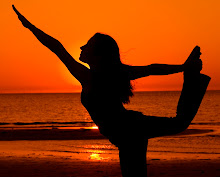1. Yama
Yama, the first limb, deals with one's ethics and sense of integrity. It focuses on our behavior and how we conduct ourselves through life. Yamas are universal practices that relate best to what we know as the Golden Rule, "Do unto others as you would have them do unto you."
The Five Yamas Are:
Ahimsa - Nonviolence
Satya - Truthfulness
Asteya - Non-stealing
Brahmacharya - Moderation in all things
Aparigraha - Non-possessiveness
2. Niyama
Niyama, the second limb, deals with self-discipline and spiritual observances. For example, regularly attending temple or church services, saying thanks before meals, developing your own personal meditation practices, or making a habit of taking contemplative walks alone are all considered practices of the niyamas.
The Five Niyamas Are:
Saucha - Purity
Samtosa - Contentment
Tapas - Austerities
Svadhyaya - Study of the sacred scriptures and of one's self
Isvara pranidhana - Constantly living with an awareness of the Divine Presence
3. Asana
Asanas, the third limb, are the postures practiced in yoga. In the yogic view, the body is a temple of spirit, the care of which is an important stage of our spiritual growth. Through the practice of asanas, we develop the habit of discipline and the ability to concentrate, both of which are fundamental for meditation.
4. Pranayama
Pranayama, the fourth limb, generally translates into breath control. Mastery over the respiratory process through specific techniques is the main focus of this limb, as well as recognizing the connection between the breath, mind, and the emotions. As implied by the literal translation of pranayama, "life force extension," yogis believe pranayama not only rejuvenates the body but actually extends life itself. You can practice pranayama as an isolated technique, for example: site and perform breathing exercises, or you can integrate pranayama into your daily yoga routine.
The central focus in the first four stages of Patanjali's ashtanga yoga are on refining our personalities, gaining mastery over the body, and developing an energetic awareness of ourselves, all of which prepare us for the second half of the journey. The part of the journey which works with the senses, the mind, and attaining a higher state of consciousness.
5. Pratyahara
Pratyahara, the fifth limb, means withdrawal or sensory transcendence. It is in this stage that a conscious effort is made to draw our awareness away from the external world and outside stimuli. As we direct our attention inwardly we become acutely aware of our senses, however we cultivate a healthy detachment from them. The practice of pratyahara provides us with the opportunity to step back and take an objective look at ourselves. This withdrawal allows us to observe our cravings, habits, and philosophies that are perhaps detrimental to our health and likely interfere with our inner growth.
6. Dharana
Dharana, the sixth limb, means concentration. Just as all the other stages of the eighthfold path have prepared for the preceding limb, so does pratyahara for dharana. The practice of pratyahara creates the foundation for dharana. At this point we have cleansed ourselves of outside distractions and can now work with the mind. Don’t be fooled, this is no easy task! However, now that we have begun the development of our powers in postures (asanas), breath control (pranayama), and the withdrawal of the senses (pratyahara), we have a better idea as to how to obtain concentration, which is the predecessor of meditation. With Dharana, we learn how to slow down the thinking process by concentrating on a single mental object: a specific energetic center in the body, an image of a deity, or the silent repetition of a sound. With extended periods of concentration we naturally lead into meditation.
7. Dhyana
Dhyana, the seventh limb of ashtanga, means meditation or contemplation; it is the uninterrupted flow of concentration. Although concentration (dharana) and meditation (dhyana) may appear to be one and the same, a fine line of distinction exists between these two stages. Where dharana practices one-pointed attention, dhyana is ultimately a state of being keenly aware without focus. At this stage, the mind has been quieted, and in the stillness it produces few or no thoughts at all. The strength and stamina it takes to reach this state of stillness is quite impressive. But don't give up. While this may seem a difficult if not impossible task, remember that yoga is a process. Even though we may not attain the "picture perfect" pose, or the ideal state of consciousness, we benefit at every stage of our progress, and remember to enjoy the journey and to not only focus on the “finish line” or “outcome”. Take time to enjoy each and every stage of ashtanga, for each one is important in its own unique way.
8. Samadhi
It is described by Patanjali that this eighth and final stage of ashtanga is a stage of ecstasy. It is at this point that the meditator merges with his or her point of focus and transcends the Self altogether. The meditator comes to realize a profound connection to the Divine, and an interconnectedness with all living things; it is the experience of bliss and being at one with the Universe: Oneness
So, what Patanjali has described as the completion of the yogic path is what deep down, all human beings desire: peace, harmony, joy, and fulfillment on our journey to Enlightenment.
Thank you for reading!
Namasté







